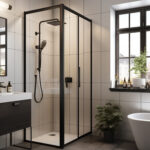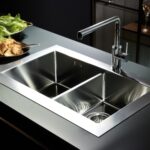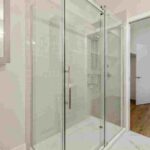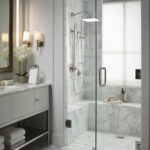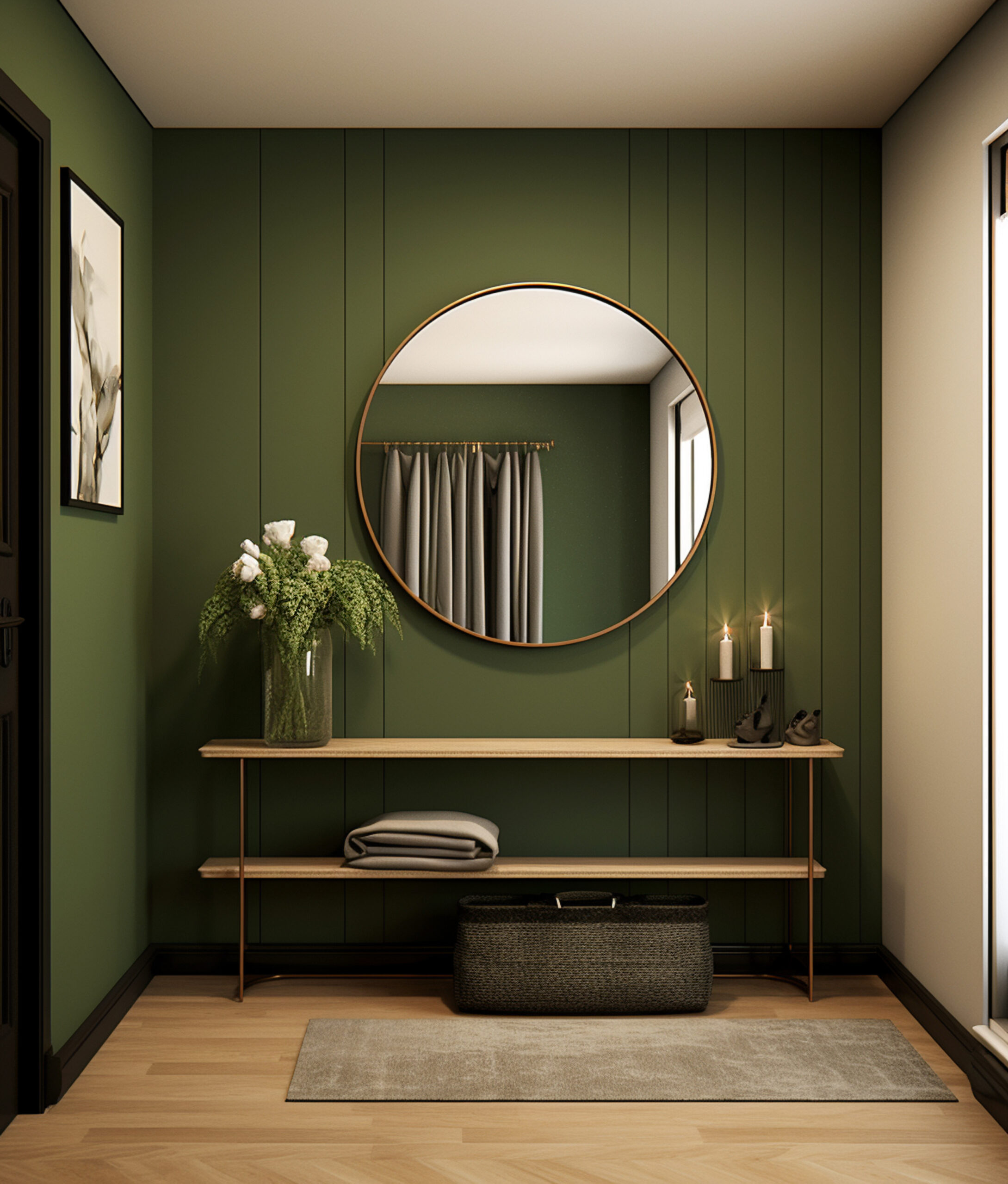When choosing the proper toilet for your bathroom, you’re faced with many options, each with its features and advantages. In Germany, two popular choices are siphonic and washdown toilets. Both types have their merits, but understanding their differences is crucial to making an informed decision. This article dives into siphonic and washdown toilets, exploring their mechanisms, benefits, and suitability for different scenarios.
When the discussion about toilets comes up, Thomas Crapper is a name that comes up very often. You might ask “What did Thomas Crapper invent” to be in the discussion well the answer is simple he invented the “U” shaped bend in many toilets that helped the process of odor control effectively.
What is a Siphonic Toilet?
A siphonic toilet has a long and narrow ‘P’ or ‘S’ shaped trap way. Which ends in the inlet of the bowl, and the other connects to the drainpipe. This trap-way design creates a siphon. Pulling the lever opens and lets the tank water flow into the bowl. The water quickly rises and sinks in the toilet bowl. The Water flows faster from the tank and exits the bowl immediately. It occurs due to the larger flush valve diameter than the drainage pipe. While siphonic toilets are considered modern, washdown toilets are similar to vintage-style toilets.
When water exits through the drain pipe, displacing the air inside the trap way or drain pipe creates a vacuum. When it flows in a trap way, the siphon begins to work. Decreased water in the toilet bowl indicates the same. Some siphonic toilet creates a swirl, but the working principle is the same.
Advantages of Siphonic Toilets
1. Water Efficiency and hygiene
Siphonic toilets are designed to use less water per flush, making them environmentally friendly and cost-effective in the long run. The siphonic toilet, also known as siphonic jet toilet, has a powerful flushing performance with its toilet bowl siphon, odorless environment, and water-efficient design. Siphonic toilets have a unique trapway design and pressure-assisted flush system to create a powerful suction effect. This powerful flush reduces the clogs and creates a clean and hygienic toilet experience. Hence, another term for a siphonic toilet is a Siphonic jet toilet. Germany has long been at the forefront of environmental conservation, and adopting siphonic toilets aligns with the nation’s commitment to sustainable practices. Siphonic toilets use less water per flush than traditional toilets, making them an excellent choice for water-conscious households. As
Germany strives to achieve its water efficiency goals, the widespread use of siphonic toilets can significantly reduce water consumption and minimize the strain on water resources. Maintaining optimal hygiene standards is crucial in any modern society. Siphonic toilets excel in promoting cleanliness due to their robust flushing mechanism. The forceful flush prevents waste buildup and reduces the risk of bacterial growth and foul odors in the toilet bowl. This aspect is essential for public restrooms and commercial establishments where maintaining a clean and sanitary environment is paramount. This makes them some of the best toilets to buy in Germany.
2. Quiet Operation with water efficiency
The siphon mechanism produces a relatively quiet flush, reducing noise disturbance in your home. Best siphonic toilets are known for their water efficiency. Due to the siphon jet mechanism, it has a complete flush with as little as 1.28 gallons per flush (GPF) compared to 3.2 GPF of washdown toilets. This reduces water bills and helps the environment. The siphon jet action creates a smooth flush and minimizes noise. Siphonic toilets are generally quieter making them suitable for bathrooms in bedrooms, apartments, or households with noise sensitivity. Traditional toilets can often generate considerable noise during flushing, which can be disruptive, particularly in residential settings. Siphonic toilets address this concern by incorporating noise-reduction technology into their design. This is yet another reason that makes siphonic toilets the best toilets to buy. The pressurized flush operates quietly, ensuring a peaceful and tranquil bathroom experience.
3. Cleaner Bowls
The swift and forceful flush of siphonic toilets helps prevent residue buildup, keeping the toilet bowl cleaner. Siphonic toilets are compact, making them a good choice for smaller bathrooms. The trapway in siphonic toilets is located at the back of the bowl, allowing for a more streamlined and compact shape compared to washdown toilets. Siphonic toilets have a variety of styles and designs, allowing homeowners to choose one that complements their bathroom décor. They are often available in modern and contemporary styles, with sleek lines and hidden trap ways, enhancing the overall aesthetics of the bathroom. The toilet flush parts are fewer and rarely need replacement.
Disadvantages of Siphonic Toilets:
1. Clogging Risk
While siphonic toilets are efficient, they can be more prone to clogging due to the force of the flush. A siphonic closet is not compatible with the older plumbing configuration. The siphon jet mechanism requires a specific drainpipe and venting system to function properly. The siphonic toilet flush parts have a complex mechanism. Siphonic toilet problems are very few but they should be considered. There are very few toilet flush problems in siphonic systems. This is one of the most crucial parts of toilet testing.
2. Limited Design Variety
Siphonic toilets often have a more modern and sleek appearance, which might not suit all bathroom aesthetics. This is reasoned by their complex design and manufacturing process. Siphonic toilets require more maintenance than washdown toilets. The siphon jet mechanism and trapway require cleaning for proper operation and clogging prevention. Siphonic toilet problems include clogging.
Siphonic toilet vs flush washdown
This is a big debate in countries like Germany, Russia, and Colombia. This is because the toilets are well preferred in both countries. As discussed above they both use different types of toilet flush systems. These toilet flush systems are namely Washdown toilet flush system Siphonic toilet flush system or a pressure-assisted flush system.
These toilets differ in many factors such as bowl size, Water usage, trapway, spare parts, maintenance, cleaning, odor control, whole toilet size, and comfortability. These qualities run neck and neck in both types of toilet systems and hence the decision of siphonic toilet vs flush washdown is difficult to conclude. However, we will see all the above qualities for both of the toilet systems.
Bowl size
The bowl sizes of the best washdown toilet seats and siphonic closet bowls are different. These sizes are according to the water action inside these bowls. Typically, the best washdown toilet bowl size is 4”x 5”, where 4” is the diameter. The size of a double siphonic toilet bowl is 7.5″ to 10.5″. This is an advantage in the list of siphonic toilet pros and cons.
Maintenance, and Cleaning
The size of a washdown toilet or blowout toilet is more compact than a siphonic toilet. Due to the “S” shaped trapway of siphonic toilets the size of the whole set becomes bigger. The maintenance of both systems is somewhat similar. The washers of both systems need replacements. When it comes to the comparison of European toilets vs American toilet, the float valve and flush valve rarely need to be replaced. However, the flush buttons’ and levers depend on their quality. The cleaning of these toilets depends on the number of holes from where the water comes down. This is mainly because these holes leave watermarks in the bowl. People from countries like Germany, Russia, and Colombia use toilet brushes as an accessory for cleaning along with the plunger for clogging.
Water usage
The water usage in a washdown toilet is much less than in a siphonic toilet. Since the washdown toilet just uses water to push the waste in the trapway. The siphonic toilet uses water to create a vacuum and move the waste inside the trapway. The Washdown toilet has a dual flush where the water usage is 3 or 6 gallons per flush, and the siphonic flush requires 6 gallons of water per flush. The Dual flushing is not for siphonic toilets.
Trapway
Trapway is different in both washdown and siphonic toilets. It is because of the flush water actions difference. The trapway of the Siphonic toilet is “S” or “P” shaped to create a good siphon. The trapway of a washdown toilet is short and wide. However, the trapway in a siphonic toilet is narrower, and there are chances of clogging. The surface area of a washdown toilet trapway is larger than a siphonic toilet trapway.
The trapway has a mechanism of a toilet fill valve. How does a toilet fill valve work? The answer is A toilet float, connected to the fill valve, falls to the bottom of the tank, opening the fill valve. When the fill valve opens, water from the supply line enters the toilet tank. As the water enters the tank, the float slowly makes its way back to the top of the tank, closing the valve as the float rises.
Odor control
The Odor of waste remains controlled in a siphonic toilet system. Washdown toilets are less preferred in countries like Germany, Russia, and Colombia, because of their lack of odor control. Odor control is one of the most important aspects of toilet testing. As we know, the siphonic toilet creates a vacuum hence getting rid of the odor. This characteristic depends on the types of toilet flush systems used in different toilets. This is yet another advantage in the list of siphonic toilet pros and cons.
Conclusion:
Siphonic toilets have emerged as a game-changer in bathroom technology, redefining water efficiency, hygiene, and user comfort. In Germany, a country renowned for its commitment to environmental conservation and innovation, adopting siphonic toilets aligns seamlessly with its values. By embracing these advanced toilet systems, Germany continues to promote sustainable practices while enhancing the quality of life for its citizens. As we look toward the future, it is clear that siphonic toilets will play a pivotal role in shaping modern sanitation standards, not only in Germany but across the globe.
The advantages and disadvantages of both Siphonic and washdown toilets are listed above. The above article explores two of the most liked toilet systems in many countries like Germany, Russia, and Colombia. We hope the above article answers questions like what did Thomas Crapper invent? And how does a toilet fill valve work?
Visit Now:https://ortonbaths.com/whats-the-mechanism-behind-a-siphonic-toilets-operation/
Visit Now:https://ortonbaths.com/rimless-toilet/



